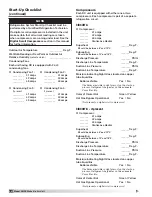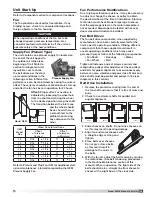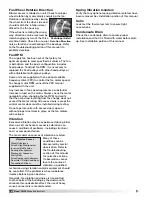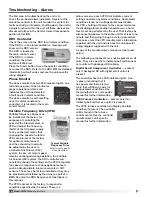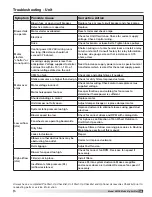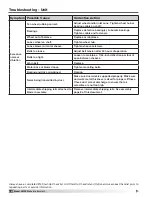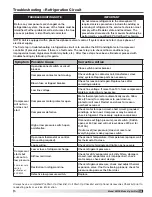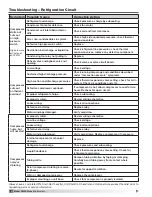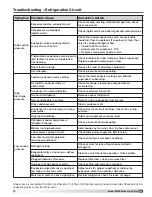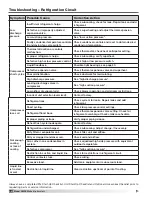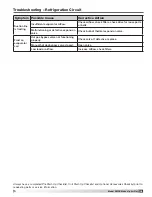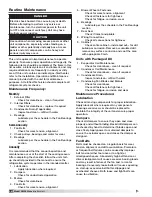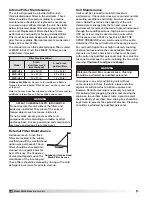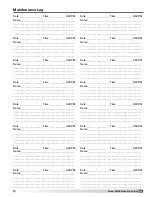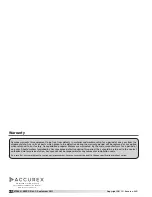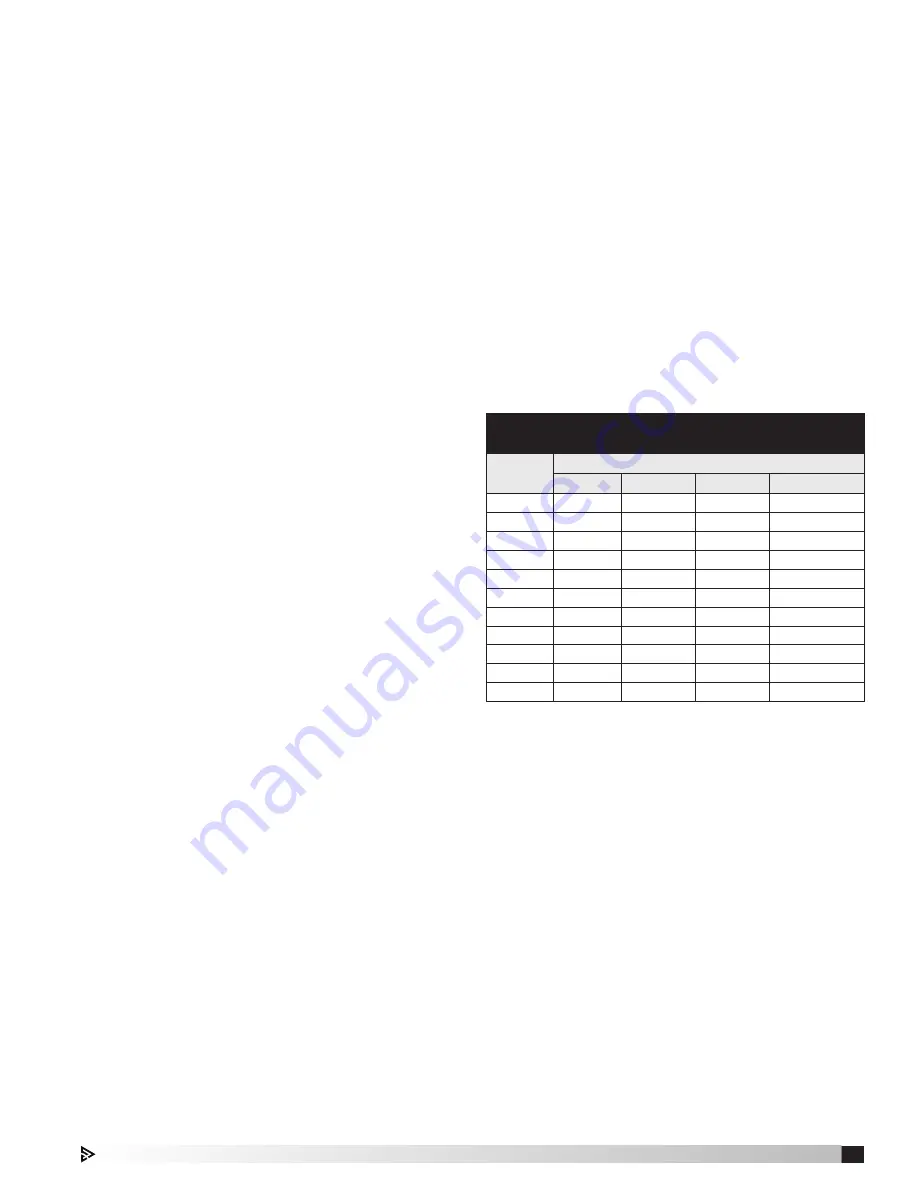
When replacing belts on multiple groove drives, all
belts should be changed to provide uniform drive
loading. Do not pry belts on or off the sheave. Loosen
belt tension until the belts can be removed by simply
lifting the belts off the sheaves. After replacing belts,
insure that slack in each belt is on the same side of
the drive. Belt dressing should never be used.
Do not install new belts on worn sheaves. If the
sheaves have grooves worn in them, they must be
replaced before new belts are installed.
The proper belt setting is the lowest tension at which
the belts will not slip under peak load operation. For
initial tensioning, set the belt deflection at 1/64-inch
for each inch of belt span (measured half-way
between sheave centers). For example, if the belt span
is 16 inches, the belt deflection should be 16/64-inch,
or 1/4-inch (using moderate thumb pressure at
mid-point of the drive). Check belt tension two times
during the first 24 hours of operation and periodically
thereafter.
Fan Motors
Motor maintenance is generally limited to cleaning
and lubrication. Cleaning should be limited to exterior
surfaces only. Removing dust and grease buildup
on the motor housing assists proper cooling. Never
wash-down the motor with high pressure spray.
Greasing of motors is only intended when fittings are
provided. Many fractional motors are permanently
lubricated for life and require no further lubrication.
Fan Wheel and Fasteners
Wheels require very little attention when moving clean
air. Occasionally oil and dust may accumulate on the
wheel causing imbalance. When this occurs, the wheel
and housing should be cleaned to assure smooth and
safe operation. Inspect fan impeller and housing for
fatigue, corrosion or wear.
Routinely check all fasteners, set screws and locking
collars on the fan, bearings, drive, motor base and
accessories for tightness. A proper maintenance
program will help preserve the performance and
reliability designed into the fan.
Fan Bearings
Most bearings are permanently lubricated and require
no further lubrication under normal use. Normal use
being considered -20°F to 120°F and in a relatively
clean environment. Some bearings are relubricatable
and will need to be re-greased depending on fan use.
Check your bearings for grease zerk fittings to find
out what type of bearing you have. If your fan is not
being operated under normal use, bearings should
be checked monthly for lubrication. Shaft bearings
are the most critical moving part of a fan. Therefore,
special attention should be given to keeping
the bearings clean and well-lubricated. Proper
lubrication provides for reduction in friction and
wear, transmission and dissipation of heat, extended
bearing life and prevention of rust.
In order for a lubricant to fulfill these tasks, the proper
grease applied at regular intervals is required. Refer to
the recommended bearing lubrication schedule:
If unusual conditions exist - temperatures below 32°F
or above 200°F, moisture or contaminants - more
frequent lubrication is required.
With the unit turning, add grease very slowly with
a manual grease gun until a slight bead of grease
appears at the seal.
Be careful not to unseat the seal by overlubricating
or using excessive pressure. A guide to the amount
of grease to be used is to fill 30% to 60% of available
space in the bearing and housing.
A high quality lithium grease conforming to NLGI
Grade 2 consistency, such as those listed below
should be used:
Mobil 532
Texaco Premium #2
B Shell Alvania #2
Mobilux #2
Texaco Multifak #2
Unirex 2
In addition to lubricating the bearings at specified
intervals, set screws in the bearing collars should be
checked for tightness. A bearing collar which has
loosened will cause premature failure of the fan shaft.
Fasteners attaching the bearings to the drive frame
should also be checked. See bearing lubrication
schedule.
Plenum Fan Bearing Lubrication Schedule
(Relubrication Schedule in Months)
Fan
RPM
Shaft Diameter in Inches
1
⁄
2
to 1
1
1
⁄
8
to 1
1
⁄
2
1
5
⁄
8
to 1
7
⁄
8
1
15
⁄
16
to 2
3
⁄
16
To 250
6
6
6
6
500
6
6
6
5
750
6
5
4
3
1000
6
4
3
2
1250
5
3
2
1
1500
5
2
1
1
2000
5
1
1
.5
2500
4
.5
.5
.25
3000
4
.5
.25
.25
4000
3
.25
.25
.25
5000
2
.25
.25
.25
37
Model MPX Make-Up Air Unit
Model XMPX Make-Up Air Unit


